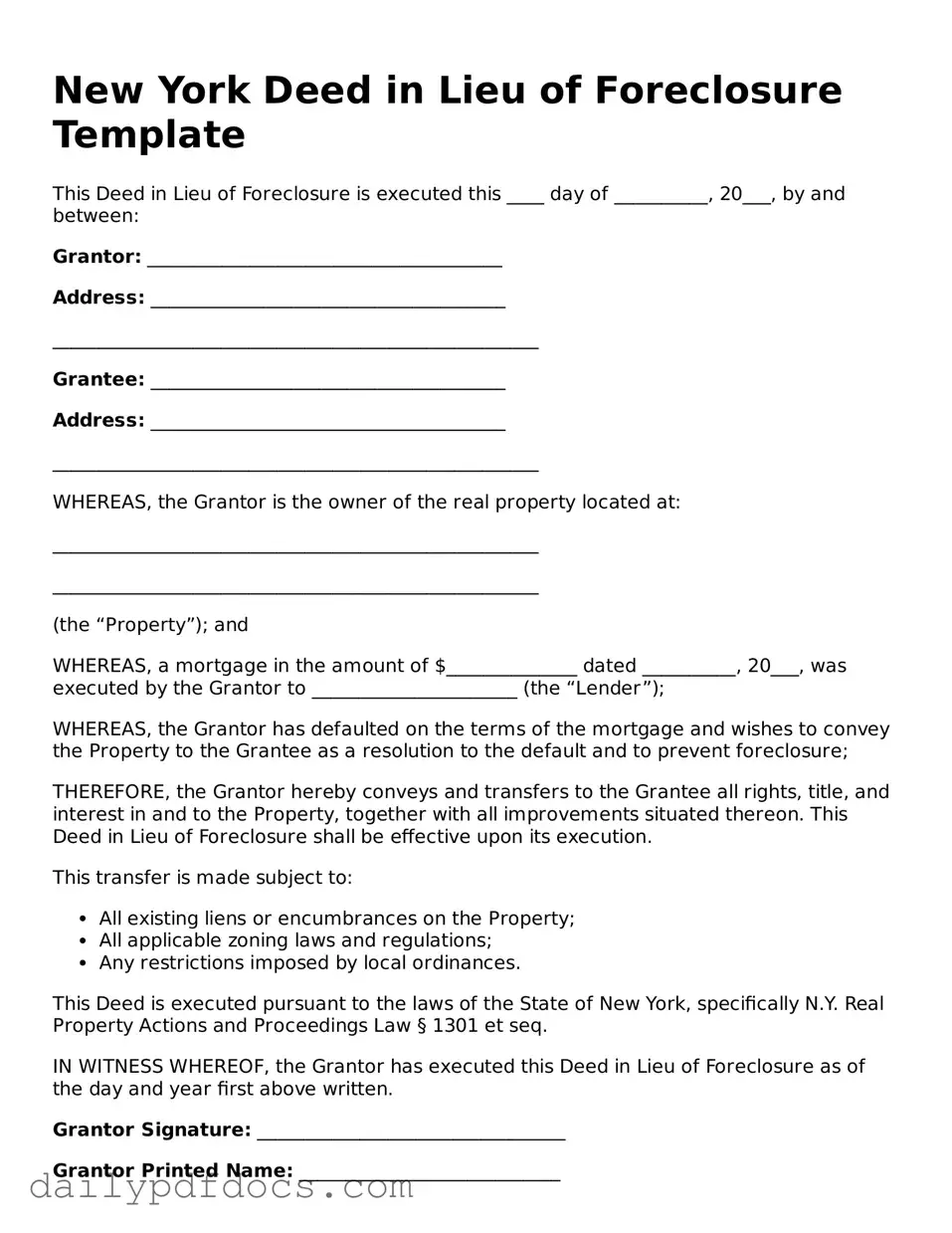New York Deed in Lieu of Foreclosure Template
This Deed in Lieu of Foreclosure is executed this ____ day of __________, 20___, by and between:
Grantor: ______________________________________
Address: ______________________________________
____________________________________________________
Grantee: ______________________________________
Address: ______________________________________
____________________________________________________
WHEREAS, the Grantor is the owner of the real property located at:
____________________________________________________
____________________________________________________
(the “Property”); and
WHEREAS, a mortgage in the amount of $______________ dated __________, 20___, was executed by the Grantor to ______________________ (the “Lender”);
WHEREAS, the Grantor has defaulted on the terms of the mortgage and wishes to convey the Property to the Grantee as a resolution to the default and to prevent foreclosure;
THEREFORE, the Grantor hereby conveys and transfers to the Grantee all rights, title, and interest in and to the Property, together with all improvements situated thereon. This Deed in Lieu of Foreclosure shall be effective upon its execution.
This transfer is made subject to:
- All existing liens or encumbrances on the Property;
- All applicable zoning laws and regulations;
- Any restrictions imposed by local ordinances.
This Deed is executed pursuant to the laws of the State of New York, specifically N.Y. Real Property Actions and Proceedings Law § 1301 et seq.
IN WITNESS WHEREOF, the Grantor has executed this Deed in Lieu of Foreclosure as of the day and year first above written.
Grantor Signature: _________________________________
Grantor Printed Name: ____________________________
STATE OF NEW YORK
COUNTY OF __________________
On this ____ day of ___________, 20___, before me, a notary public in and for said state, personally appeared ______________________________, known to me (or satisfactorily proven) to be the person whose name is subscribed to the within instrument, and acknowledged that he/she executed the same for the purposes therein contained.
In witness whereof I hereunto set my hand and official seal.
Notary Public Signature: ____________________________
My Commission Expires: _____________________________
